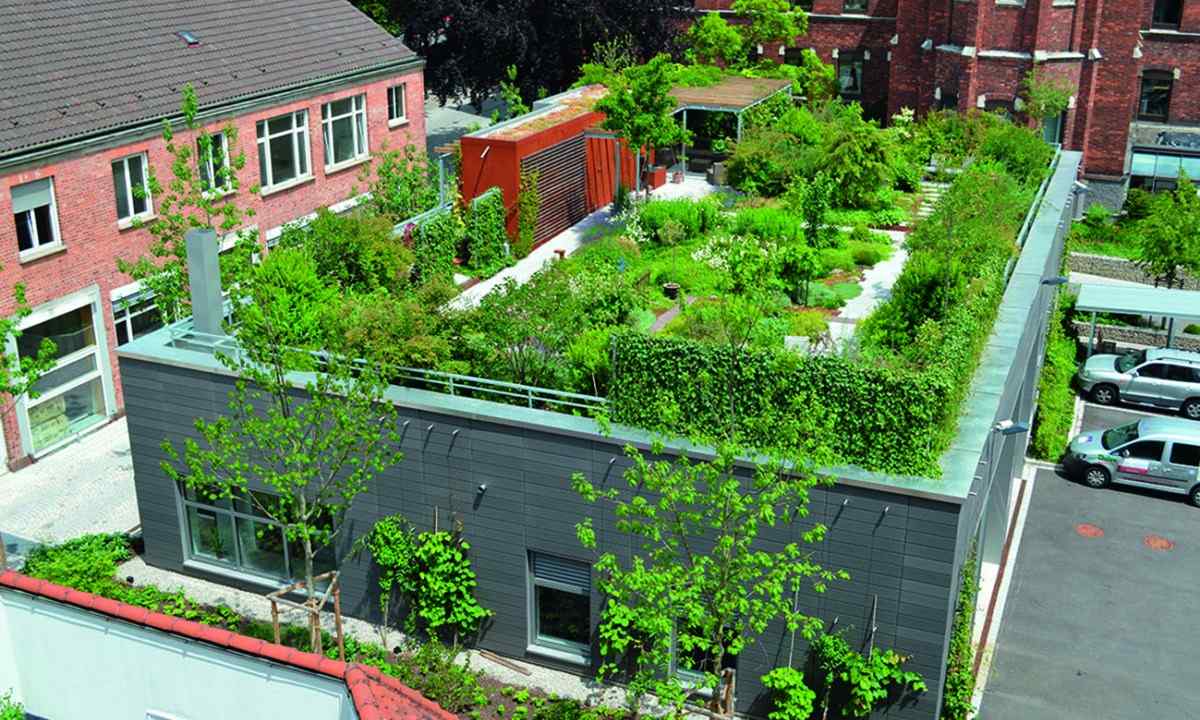Green roofs – technology which is based on filling of roof of buildings with plants. Such objects more often meet today in megalopolises, but gardening is also used at construction of owner-occupied dwellings and construction of farm buildings.
Landscape designers use plants in tubs, land them in soil. It allows to create public buildings with unique characteristics. Such type of gardening can be met in shopping centers, office buildings. Green roofs also do in multi-storey residential buildings, creating extra seats of rest.
Types of green roofs
There are two types of roofs with plants therefore at construction of buildings it is necessary to choose one of the following options:
- extensive type;
- intensive which is called still inversion roof.
Difference of the first options that on such roof it is forbidden to go (except for certain sites). It is done on certain amount of time. The soil layer most often does not exceed 0.15 m, it gives the chance to plant there only small plants. Usually it are lawn versions or moss, it is placed in pallets.
It is important to consider that plants which land on extensive roof have to possess either fibrillose root system, or bulbous.
The inversion green roof is supplied with parapet. The soil layer is more, it reaches 0.6 m. On such roof it is possible to arrange not only lawn, but also to lay out garden. Soil is enough to plant bushes and trees which create shadow on roof.
On roof of office buildings do the pool, recreation area and the observation deck. It is possible to see such type of green roof in buildings in which hotels, business centers, restaurants and other public institutions are located.
The design of such roof needs to be developed on building blueprint stage, thickness of soil and weight of trees, benches, fountains the base and walls strongly increases loading.
Advantages and shortcomings
Experts have to be engaged in the device of green roof, it has complex structure. Main layers following:
- It consists of lawn grass and plants which land in soil.
- Soil substrate. It is selected, considering vegetation type.
- Drainage course.
- Pay to its design special attention, the safety of the rooms located under roof depends on quality of this layer.
- Thermal insulation.
In private construction the quantity of layers can be reduced, everything depends on features of the building.
Green roofs have many advantages. They improve environmental setting, purifying air. Plantings reduce noise level therefore such roof should be done in those houses which are located near noise sources.
Thermal insulation level increases. In the summer the green cover absorbs sunshine, the roof does not overheat. In the winter heat is late indoors, without coming to light. Roof life cycle increases, plants and the soil protect design from snow, rain and other adverse effect.
Separately it is worth mentioning magnificent exterior. The green roof can become extra space of rest, the roof garden of high-rise building will attract many.
Speaking about green roofs, it is necessary to mention also their shortcomings. Such gardening is expensive pleasure, plants will not be able to live without the system of automatic watering. The gardener has to look after them. If it is going to make green roof on already built building, it is necessary to order examination, not all designs will be able to take out additional loading. Mounting of green roof has to be executed by experts who will lay electric cables, reliably they are isolated from moisture.
Not each plant can live in similar conditions therefore their thorough selection is necessary. Owners of owner-occupied dwellings have to know that the green roof will approach not all architectural styles therefore before works it is worth consulting with the expert.

